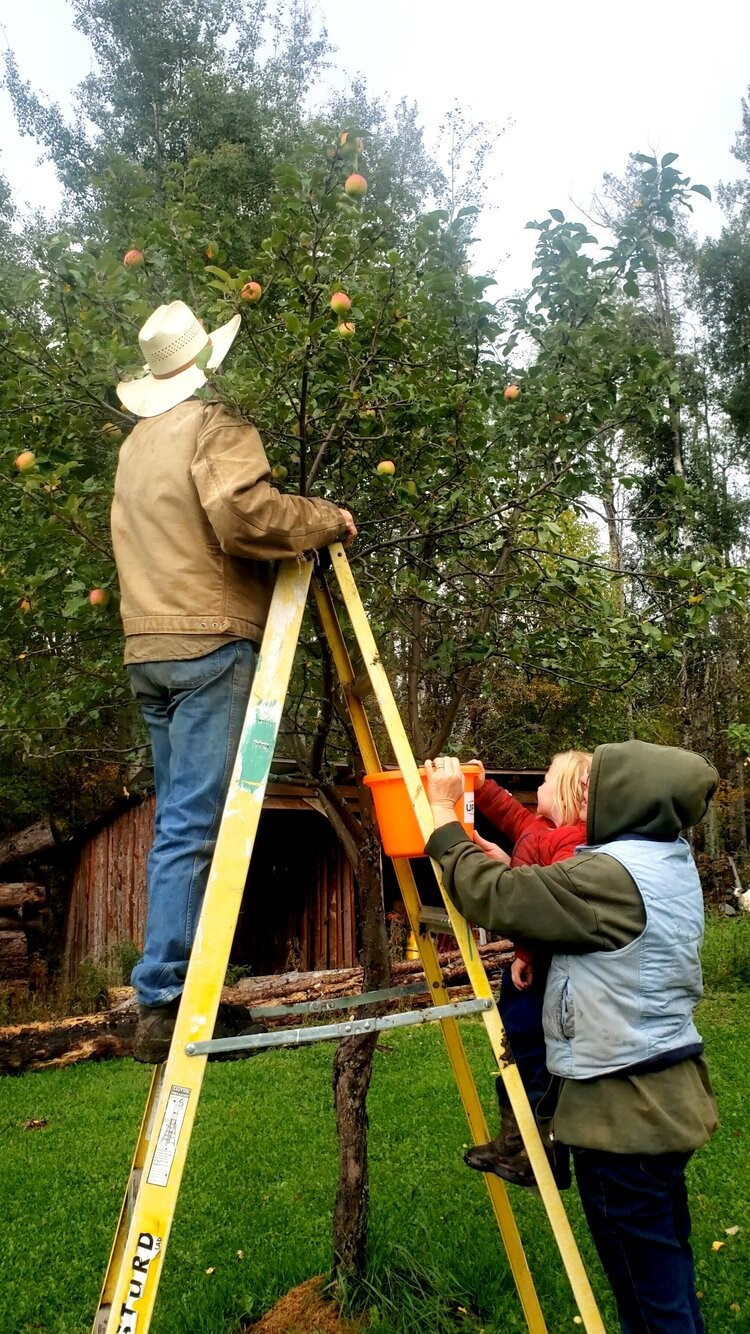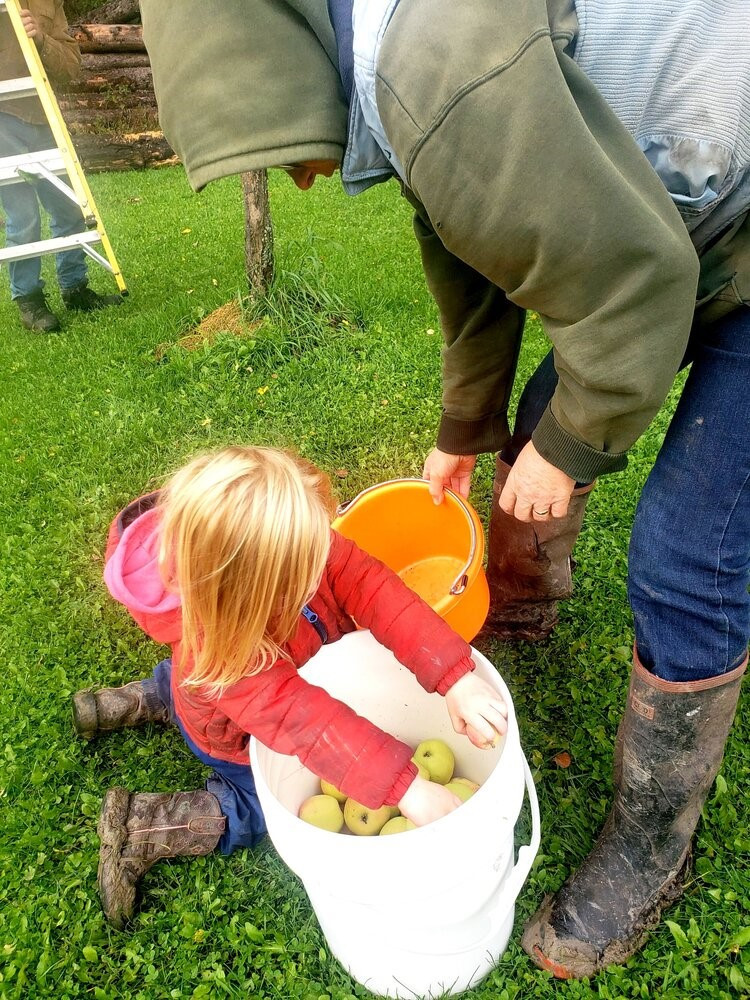Harvest Season Is Upon Us
posted on
September 20, 2019
Beautiful Harvest Days Are Upon Us.

Grandpa, Grandma and Grand Children picking apples.
Fall has always been my favourite season of the year. It is the season when we are in full swing reaping the benefits of all our hard work of the past many months.
Way back last December the seed catalogs started arriving in the mail. Any gardener knows that when those colourful catalogs arrive a person drops everything you are doing to dream about your next garden. First you find your old faithful varieties, then you add all the new ones that you want to try to the list. Then the hard part comes: deciding what you actually need and want to order.
Come February when the strong clutches of winter still surround us, we head out to the garden shed through four feet of snow to pull out your seed starting trays and that special soil that you always use. After slowly trudging back to the house through the snow you start planting those precious seeds.
HELP, MY HOUSE IS LOST!
 I told our grand daughter to handle the apples as if she were handling eggs because we didn’t want them bruised.
I told our grand daughter to handle the apples as if she were handling eggs because we didn’t want them bruised.
By mid-April you house is overflowing with all the plants that will grace your garden all summer. But, in at 55 degrees north, unless you have a greenhouse, those tender babies can’t go outside for at least another two to three weeks. Fortunately, the days are starting to be above freezing so we carefully move our plants outside for the day, but are quick to bring them back in before that thermometer plunges below 0C in the evening.
Finally, by the beginning of June those plants are no longer really tender and are ready to plant out in the garden.
ALL THOSE WEEDS
Then they must be kept weeded. We try to have been through all the garden beds at least once by mid-June. Then we start mulching to keep the weeds that want to keep coming under control.
Early July is the start of our harvest season. It starts slowly, then as the summer progresses ramps up to full speed ahead.
By the 20th of August we are anticipating that we could have frost at night. We watch the weather forecast to see if we need to cover all those tender plant. This has been a very unusual fall for us. As I write this it is September 19 and we have not had any frost. But at this time of year you don’t want to become complacent. We have been caught in the past by bad weather.

Being very careful! Special times with special littles.
So the harvest has started in earnest. We started by picking the tomatoes, even if they were green. Thankfully they will ripen inside. Then came the zucchini. They are sitting on the kitchen cupboard waiting to be turned into zucchini relish and seasoned zucchini slices for those cold winter suppers. Next in line are the root vegetables. Potatoes are being dug, washed, cured and put up. Once they are safely put up we will bring in the rest of the root vegetables; carrots, beets and rutabagas.
Smack dab in the middle of harvesting all those veggies the apples and chokecherries are ready too. The cooking apples are dehydrated for snacks and the keeping apples are stored away in the walk-in cooler (some day we might have time to build our dream root cellar). Chokecherries are turned into juice for making syrup for pancakes and flavouring for smoothies when we have time later.
Oh, and I haven’t even mentioned the garden clean up and animal harvest…
Do you want to hear what’s happening next week. Be sure to subscribe. There is always something going on at the farm.



